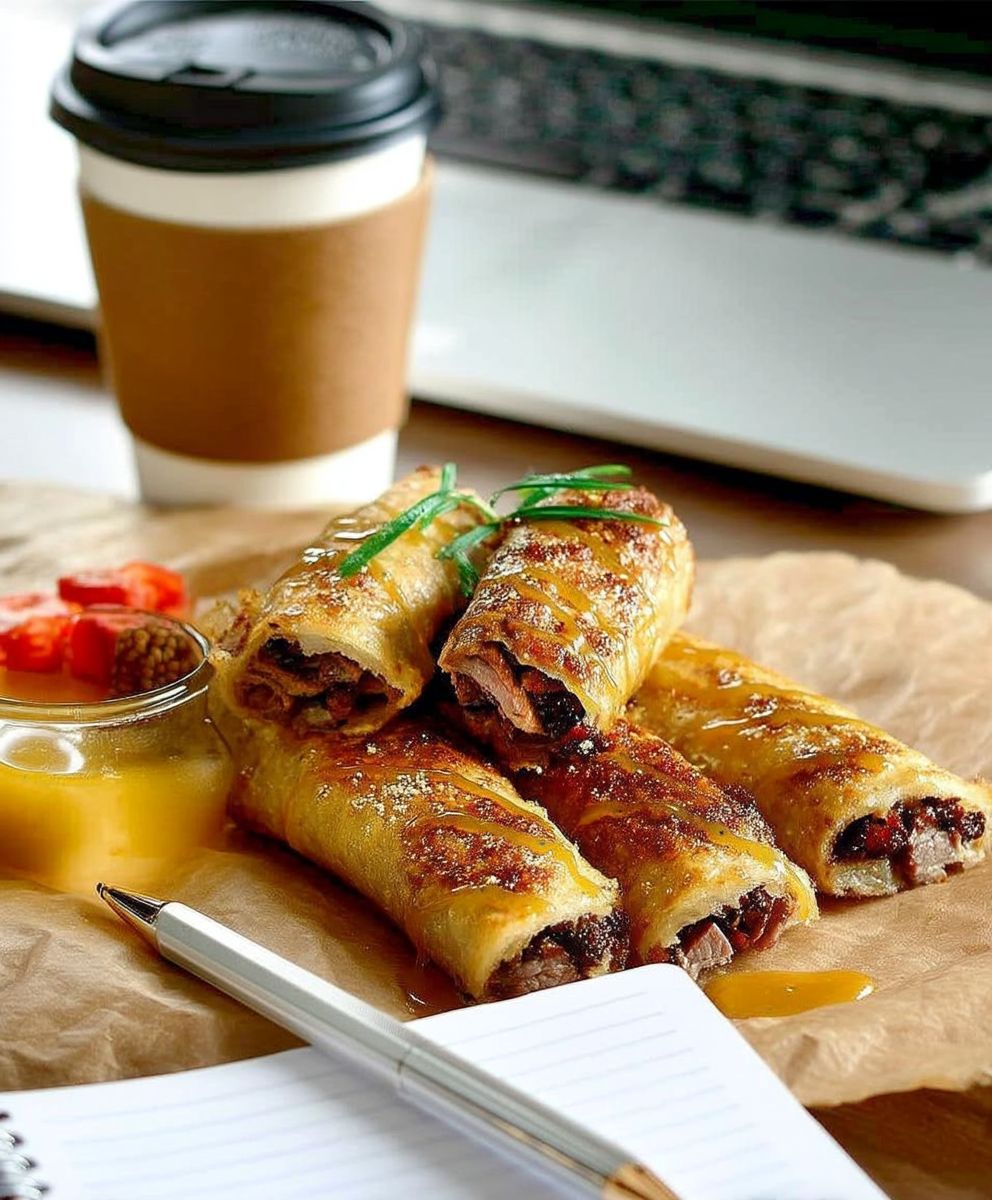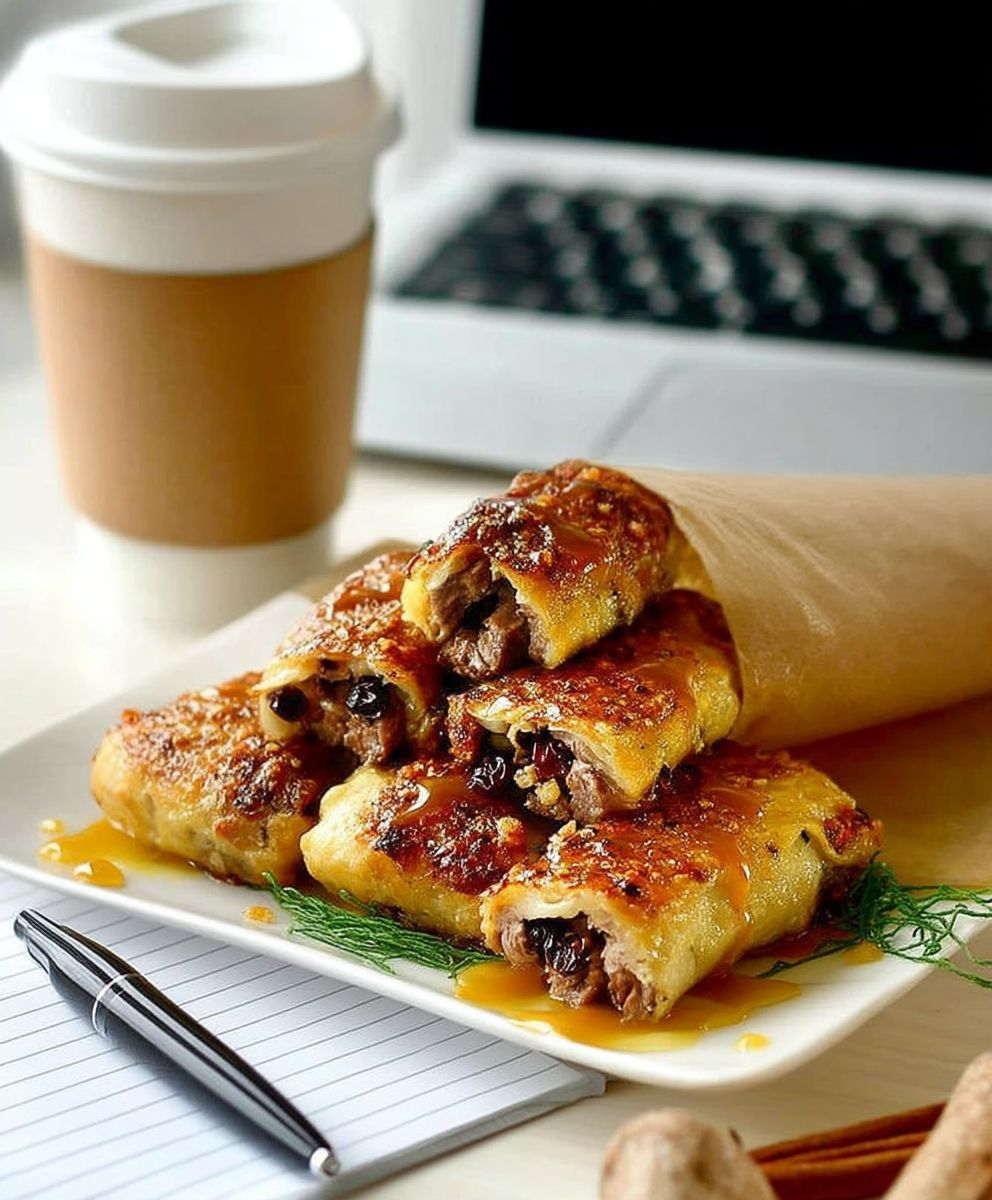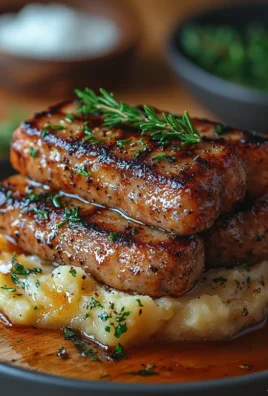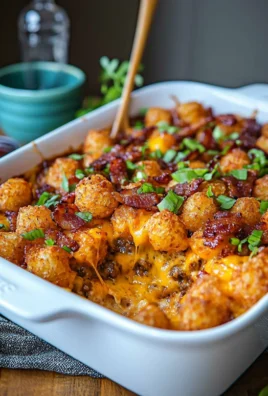Christmas Roast Duck: the centerpiece of a holiday feast that will have your guests raving! Forget the same old turkey this year and prepare to be amazed by the rich, succulent flavors of a perfectly roasted duck. Are you ready to elevate your Christmas dinner to a whole new level of deliciousness?
Roast duck has a long and storied history, gracing tables for centuries across various cultures. From Peking Duck’s crispy skin and delicate pancakes to the festive traditions of European Christmas celebrations, duck has always been associated with special occasions and culinary artistry. In many cultures, duck symbolizes prosperity and good fortune, making it a particularly fitting choice for a joyous holiday meal.
But why is Christmas Roast Duck such a beloved dish? It’s all about the experience. The crispy, golden-brown skin gives way to incredibly tender and flavorful meat, a delightful contrast that tantalizes the taste buds. The rendered duck fat can be saved and used to roast potatoes, adding another layer of richness to your meal. Plus, let’s be honest, there’s something undeniably impressive about presenting a beautifully roasted duck at the table. It’s a showstopper that’s sure to impress your family and friends. This year, ditch the ordinary and embrace the extraordinary with this unforgettable Christmas Roast Duck recipe!
Ingredients:
- 1 (5-6 pound) whole duck, preferably Pekin
- 2 tablespoons kosher salt, plus more for seasoning
- 1 tablespoon freshly ground black pepper, plus more for seasoning
- 1 orange, quartered
- 1 apple, quartered
- 1 onion, quartered
- 4 sprigs fresh rosemary
- 4 sprigs fresh thyme
- 2 cups chicken broth
- 1 cup dry red wine
- 2 tablespoons balsamic vinegar
- 1 tablespoon honey
- 1 tablespoon cornstarch
- 2 tablespoons cold water
- Optional: 1/2 cup dried cranberries for stuffing
- Optional: 1/2 cup chopped walnuts for stuffing
Preparing the Duck:
Okay, let’s get started with prepping our beautiful duck! This is the most important part, so pay close attention. We want crispy skin and juicy meat, and that starts right here.
- Pat the Duck Dry: This is absolutely crucial! Use paper towels to thoroughly pat the duck dry, inside and out. The drier the skin, the crispier it will get. Don’t skip this step! I usually go through a whole roll of paper towels.
- Prick the Skin: Using a sharp knife or a fork, prick the skin all over, being careful not to pierce the meat. This allows the fat to render out during roasting, resulting in that coveted crispy skin. Focus especially on areas with thicker skin, like the thighs and breast. I like to space the pricks about 1/2 inch apart.
- Season Generously: Now, season the duck inside and out with the kosher salt and black pepper. Don’t be shy! We want to really flavor the duck. Make sure to get the seasoning into all the nooks and crannies. I usually rub the salt and pepper into the skin to help it adhere.
- Stuff the Cavity: Stuff the cavity of the duck with the orange quarters, apple quarters, onion quarters, rosemary sprigs, and thyme sprigs. These aromatics will infuse the duck with flavor from the inside out. If you’re using dried cranberries and walnuts, add them to the cavity as well. They add a lovely sweetness and texture.
- Truss the Duck (Optional): Trussing the duck helps it cook more evenly and maintains its shape. If you’re comfortable trussing, go for it! If not, don’t worry too much. It’s not essential. To truss, use kitchen twine to tie the legs together and then tie the wings close to the body.
- Refrigerate (Optional but Recommended): Place the prepared duck on a wire rack set over a baking sheet. This allows air to circulate around the duck, further drying out the skin. Refrigerate the duck, uncovered, for at least 4 hours, or preferably overnight. This is a game-changer for crispy skin!
Roasting the Duck:
Now for the main event! Roasting the duck requires a bit of patience, but the results are well worth it. We’ll start with a high temperature to crisp the skin and then lower it to cook the duck through.
- Preheat the Oven: Preheat your oven to 450°F (232°C). Make sure your oven is properly preheated before putting the duck in.
- Prepare the Roasting Pan: Place the duck, still on the wire rack, in a roasting pan. Pour the chicken broth into the bottom of the roasting pan. This will help to keep the duck moist and prevent the drippings from burning.
- Roast at High Temperature: Roast the duck at 450°F (232°C) for 30 minutes. This initial high heat will help to render the fat and crisp the skin. Keep a close eye on the duck during this time to make sure the skin doesn’t burn.
- Reduce Temperature: Reduce the oven temperature to 325°F (163°C) and continue roasting for another 1 1/2 to 2 hours, or until a meat thermometer inserted into the thickest part of the thigh registers 165°F (74°C). The exact cooking time will depend on the size of your duck.
- Baste the Duck: Every 30 minutes, baste the duck with the pan drippings. This will help to keep the skin moist and flavorful. Use a bulb baster or a spoon to scoop up the drippings and pour them over the duck.
- Remove Excess Fat: During roasting, you’ll notice a lot of fat rendering out of the duck. Remove the excess fat from the roasting pan every 30 minutes or so. This will prevent the fat from splattering and smoking in the oven. You can save the duck fat for other cooking purposes it’s delicious for roasting potatoes!
- Check for Doneness: To check for doneness, insert a meat thermometer into the thickest part of the thigh, being careful not to touch the bone. The duck is done when the thermometer registers 165°F (74°C). You can also pierce the thigh with a fork; the juices should run clear.
- Rest the Duck: Once the duck is cooked, remove it from the oven and let it rest for at least 15 minutes before carving. This allows the juices to redistribute throughout the meat, resulting in a more tender and flavorful duck. Tent the duck loosely with foil to keep it warm.
Making the Balsamic Honey Glaze:
While the duck is resting, let’s whip up a delicious balsamic honey glaze to add a touch of sweetness and tanginess. This glaze really elevates the flavor of the duck.
- Skim the Fat: Carefully skim off any remaining fat from the pan drippings, leaving only the flavorful juices. You can use a fat separator or a spoon to do this.
- Combine Ingredients: In a small saucepan, combine the pan drippings, red wine, balsamic vinegar, and honey.
- Simmer and Reduce: Bring the mixture to a simmer over medium heat and cook for 10-15 minutes, or until the sauce has reduced and thickened slightly.
- Thicken with Cornstarch (Optional): If you want a thicker glaze, whisk together the cornstarch and cold water in a small bowl. Gradually whisk the cornstarch slurry into the simmering sauce and cook for another minute or two, or until the sauce has thickened to your desired consistency.
- Strain the Glaze (Optional): For a smoother glaze, strain the sauce through a fine-mesh sieve to remove any solids.
Carving and Serving:
Finally, the moment we’ve all been waiting for! Carving the duck can seem intimidating, but with a sharp knife and a little patience, you’ll be a pro in no time.
- Remove the Stuffing: Remove the stuffing from the cavity of the duck and discard it.
- Separate the Legs and Thighs: Using a sharp carving knife, separate the legs and thighs from the body of the duck.
- Slice the Breast: Slice the breast meat thinly, starting from the breastbone and working your way outwards.
- Arrange on a Platter: Arrange the carved duck pieces on a platter.
- Drizzle with Glaze: Drizzle the balsamic honey glaze over the duck.
- Garnish (Optional): Garnish with fresh herbs, such as rosemary or thyme, for a festive touch.
- Serve and Enjoy! Serve immediately and enjoy your delicious Christmas Roast Duck! It pairs perfectly with roasted vegetables, mashed potatoes, or your favorite holiday side dishes.
Tips for Extra Crispy Skin:
- Dry, Dry, Dry: I can’t stress this enough! The drier the skin, the crispier it will be.
- Refrigerate Uncovered: Refrigerating the duck uncovered overnight is a game-changer.
- High Initial Heat: Starting with a high oven temperature helps to render the fat quickly.
- Don’t Overcrowd the Pan: Make sure the duck has enough space in the roasting pan for air to circulate.
- Avoid Opening the Oven Too Often: Opening the oven too often can lower the temperature and affect the crispiness of the skin.
Variations:
- Orange Glaze: Substitute orange juice for the red wine in the glaze for a citrusy twist.
- Maple Glaze: Use maple syrup instead of honey for a richer, more caramel-like glaze.
-

Conclusion:
And there you have it! Our Christmas Roast Duck recipe, a surefire way to impress your guests and create a truly memorable holiday feast. I truly believe this recipe is a must-try because it delivers that perfect balance of crispy skin, succulent meat, and aromatic flavors that define a classic Christmas centerpiece. Forget dry, bland poultry this method ensures a juicy and flavorful duck that will have everyone reaching for seconds (and maybe even thirds!).
But the deliciousness doesn’t stop there! This recipe is also incredibly versatile. While I’ve outlined my favorite herb and spice blend, feel free to experiment with your own preferred seasonings. A touch of orange zest and ginger can add a bright, citrusy note, while a sprinkle of smoked paprika can introduce a subtle smoky depth. Don’t be afraid to get creative and tailor the flavors to your own palate.
Serving Suggestions and Variations:
For a truly spectacular presentation, serve the Christmas Roast Duck on a large platter surrounded by roasted root vegetables like carrots, parsnips, and potatoes. The sweetness of the vegetables complements the richness of the duck beautifully. A side of cranberry sauce is an absolute must, providing a tangy counterpoint to the savory flavors. And don’t forget the gravy! Use the pan drippings to create a luscious gravy that will tie everything together.
If you’re looking for variations, consider stuffing the duck with a flavorful breadcrumb mixture. A combination of sourdough bread, dried cranberries, walnuts, and herbs would be a fantastic addition. Alternatively, you could try a fruit-based stuffing with apples, pears, and dried apricots.
Another variation involves the glaze. While I’ve used a simple honey glaze, you could experiment with other options like maple syrup, balsamic vinegar, or even a spicy chili glaze for a bit of heat. The possibilities are endless!
Don’t forget the sides! A classic green bean casserole, mashed potatoes, or even a simple salad can round out the meal perfectly. And of course, no Christmas feast is complete without a decadent dessert. A slice of pumpkin pie, a warm apple crumble, or a rich chocolate cake would be the perfect ending to your holiday celebration.
I’m so excited for you to try this recipe and experience the joy of creating a truly special Christmas meal. I’ve poured my heart and soul into perfecting this Christmas Roast Duck, and I’m confident that it will become a cherished tradition in your own home.
So, gather your ingredients, preheat your oven, and get ready to embark on a culinary adventure. I promise you won’t be disappointed. And most importantly, don’t be afraid to have fun in the kitchen! Cooking should be an enjoyable experience, so relax, put on some festive music, and let the aromas of Christmas fill your home.
I truly believe that this recipe is a game-changer, and I can’t wait to hear about your experiences. Please, please, please give this recipe a try!
Once you’ve made it, I would absolutely love to hear how it turned out. Share your photos and stories with me in the comments below. Did you make any variations? What were your favorite sides? What did your family and friends think? Your feedback is invaluable, and it helps me to continue creating recipes that you’ll love.
Happy cooking, and Merry Christmas! I hope this Christmas Roast Duck brings you and your loved ones much joy and deliciousness this holiday season. I am confident that this will become a family favorite.
Christmas Roast Duck: The Ultimate Festive Recipe
Crispy and flavorful roast duck with a balsamic honey glaze, perfect for a special occasion.
Ingredients
- 1 (5-6 pound) whole duck, preferably Pekin
- 2 tablespoons kosher salt, plus more for seasoning
- 1 tablespoon freshly ground black pepper, plus more for seasoning
- 1 orange, quartered
- 1 apple, quartered
- 1 onion, quartered
- 4 sprigs fresh rosemary
- 4 sprigs fresh thyme
- 2 cups chicken broth
- 1 cup dry red wine
- 2 tablespoons balsamic vinegar
- 1 tablespoon honey
- 1 tablespoon cornstarch
- 2 tablespoons cold water
- Optional: 1/2 cup dried cranberries for stuffing
- Optional: 1/2 cup chopped walnuts for stuffing
Instructions
- Use paper towels to thoroughly pat the duck dry, inside and out.
- Using a sharp knife or a fork, prick the skin all over, being careful not to pierce the meat. Space the pricks about 1/2 inch apart.
- Season the duck inside and out with the kosher salt and black pepper.
- Stuff the cavity of the duck with the orange quarters, apple quarters, onion quarters, rosemary sprigs, and thyme sprigs. If using, add dried cranberries and walnuts.
- Truss the duck with kitchen twine.
- Place the prepared duck on a wire rack set over a baking sheet. Refrigerate the duck, uncovered, for at least 4 hours, or preferably overnight.
- Preheat your oven to 450°F (232°C).
- Place the duck, still on the wire rack, in a roasting pan. Pour the chicken broth into the bottom of the roasting pan.
- Roast the duck at 450°F (232°C) for 30 minutes.
- Reduce the oven temperature to 325°F (163°C) and continue roasting for another 1 1/2 to 2 hours, or until a meat thermometer inserted into the thickest part of the thigh registers 165°F (74°C).
- Every 30 minutes, baste the duck with the pan drippings.
- Remove the excess fat from the roasting pan every 30 minutes or so.
- Insert a meat thermometer into the thickest part of the thigh, being careful not to touch the bone. The duck is done when the thermometer registers 165°F (74°C).
- Once the duck is cooked, remove it from the oven and let it rest for at least 15 minutes before carving. Tent the duck loosely with foil to keep it warm.
- Carefully skim off any remaining fat from the pan drippings, leaving only the flavorful juices.
- In a small saucepan, combine the pan drippings, red wine, balsamic vinegar, and honey.
- Bring the mixture to a simmer over medium heat and cook for 10-15 minutes, or until the sauce has reduced and thickened slightly.
- Whisk together the cornstarch and cold water in a small bowl. Gradually whisk the cornstarch slurry into the simmering sauce and cook for another minute or two, or until the sauce has thickened to your desired consistency.
- For a smoother glaze, strain the sauce through a fine-mesh sieve to remove any solids.
- Remove the stuffing from the cavity of the duck and discard it.
- Using a sharp carving knife, separate the legs and thighs from the body of the duck.
- Slice the breast meat thinly, starting from the breastbone and working your way outwards.
- Arrange the carved duck pieces on a platter.
- Drizzle the balsamic honey glaze over the duck.
- Garnish with fresh herbs, such as rosemary or thyme, for a festive touch.
- Serve immediately.
Notes
- Dry the duck thoroughly.
- Refrigerate uncovered overnight.
- Use a high initial oven temperature.
- Don’t overcrowd the pan.
- Avoid opening the oven too often.
- Orange Glaze: Substitute orange juice for the red wine in the glaze.
- Maple Glaze: Use maple syrup instead of honey for a richer glaze.






Leave a Comment